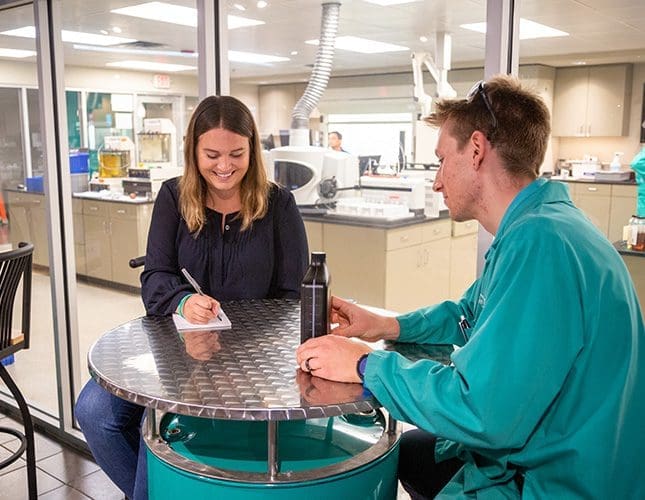Article recently featured in MPMA:
Whether you’re a machinist or a shop owner, you know that your equipment is your lifeblood. It’s what keeps production lines running, employees safe and customers happy. That’s why it’s critical to keep your heavy-duty equipment and machines in good working condition. One of the best, yet under-utilized, ways to do so is fluid analysis.
Fluid analysis is a simple, cost-effective way to monitor the health of your equipment’s fluid. By regularly analyzing your fluid, you can identify early signs of wear and damage, and take steps to prevent costly failures. It can also help you extend the life of your equipment, improve its performance and reduce overall maintenance costs.
If you are not already using fluid analysis, you should consider it. It’s one of the best investments you can make in the long-term health of your equipment and business.
Fluid Analysis Process
Fluid analysis is a process of testing the fluid in your equipment to look for signs of wear and damage.
The fluid is tested for a variety of factors, including contaminants, wear particles, oxidation, acidity and additive depletion. By analyzing the fluid, you will get a comprehensive, data-driven understanding of the condition of your equipment at any one time and identify any potential problems.

Fluid analysis is a relatively simple process that can provide valuable information about the condition of your equipment. The first step is to collect a sample of the fluid from your equipment. This can be done by draining the fluid from the equipment or by using a sampling device. Once the sample has been collected, it is sent to a laboratory for testing.
Let’s Get Technical
- Spectroscopy – techniques that use light to determine the chemical composition of the fluid. Used to identify elemental presence of additives, wear metals, contamination, and oxidative byproducts.
- Titration – a wet chemistry technique that can be used to determine acidic byproducts of oxidation, the concentration of antioxidants, and water contamination.
- Particle Counting – an optical determination of microscopic particle contamination.
- Physical Analysis – testing for viscosity, appearance, gross water contamination.
The results of the tests are then analyzed by a trained laboratory technician, who will provide you with a report that details the condition of your fluid and any potential problems.
Benefits of Predictive Maintenance
Fluid analysis unlocks a whole new level of maintenance. One of the best benefits of fluid analysis is the predictive control it gives you over your equipment’s maintenance.
You’re not wasting time, effort, or money on triaging after the fact. If you’re not doing fluid analysis, you’re waiting on the fluid to fail. Fluid costs several hundred dollars, tooling costs several thousand dollars.

By spotting potential problems early through regular fluid analysis, you can take steps to prevent them from causing a critical failure and unwanted downtime. This can save you time, money, and hassle.
Once you’ve implemented your fluid analysis program, you’ll start seeing the benefits over time. There are several benefits to using fluid analysis, which include:
- Improves Equipment Reliability
- Reduces Maintenance Costs
- Extends Equipment Life
- Improves Operational Safety
- Provides Peace of Mind
Fluid analysis costs are typically offset by the savings that can be achieved by identifying and addressing problems within your equipment early. For example, if you can identify a problem with your machine’s fluid before it causes serious damage, you may be able to avoid a costly repair.
In addition to the cost savings, fluid analysis can also help you improve the reliability of your equipment. By identifying and addressing problems early, you can help to prevent equipment failures. This can lead to increased uptime and productivity, and ultimately, keeps your machinists on their machines, doing what they do best.